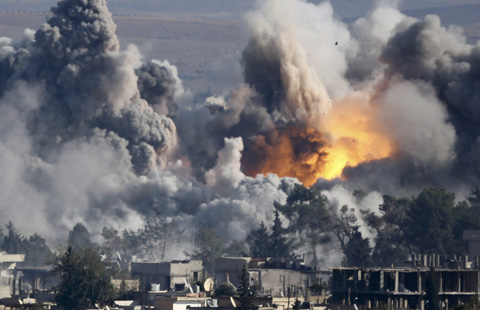Divers retrieve cockpit voice recorder of crashed AirAsia jet
(Xinhua) Updated: 2015-01-13 09:30The search operation, which entered 17th day on Tuesday, have been hampered by big waves and powerful currents. By far, 48 bodies were recovered with 34 of them having been identified, while most of the undiscovered ones were believed to be entombed.
Dozens of Indonesian navy divers took advantage of calmer weather this week to retrieve the black boxes and now hope to find the fuselage of the Airbus.
Searchers believe more bodies will be found in the plane's fuselage.
The information pulled from the black boxes _ which are actually orange _ will likely be vital. Designed to survive extreme heat and pressure, they should provide investigators with a second-by-second timeline of the flight.
The voice recorder captures all conversations between the pilots and with air traffic controllers, as well as any noises heard in the cockpit, including possible alarms or explosions.
The flight data recorder saves information on the position and condition of almost every major part in the plane, including altitude, airspeed, direction, engine thrust, the rate of ascent or descent and what up-or-down angle the plane was pointed.
"There's like 200-plus parameters they record," said aviation expert John Goglia, a former US National Transportation Safety Board member. "It's going to provide us an ocean of material."
In their last contact with air-traffic controllers, the pilots of the AirAsia jet asked to climb from 32,000 feet (9,750 meters) to 38,000 feet (11,580 meters) to avoid threatening clouds, but were denied permission because of heavy air traffic. Four minutes later, the plane disappeared. No distress signal was received.
- Divers recover black box from AirAsia crash
- Divers retrieve AirAsia 'black box', explosion theory questioned
- Investigator disputes AirAsia explosion theory
- Pressure change likely caused AirAsia jet to explode before impact-govt official
- AirAsia cockpit voice recorder located: official
- Black box of crashed AirAsia plane retrieved
- Indonesian divers launch efforts to retrieve AirAsia black boxes
 Overhauling China's organ transplant system could take some time
Overhauling China's organ transplant system could take some time
Overhauling China's organ transplant system could take some time





